Sales pitching is a critical skill that can significantly impact the success of a business. A well-crafted pitch not only conveys the value of a product or service but also addresses the specific needs and concerns of the customer. In this article, we’ll explore ten examples of sales pitch and ideas to help you create an effective pitching strategy.
What is Sales Pitch?
A sales pitch is a presentation or conversation designed to influence someone to purchase a product or service. It typically highlights the key features, benefits, and unique selling points of the offering, addressing the specific needs or problems of the potential customer. The goal of a sales pitch is to show the listener that the product or service is valuable and worth their money, aiming to secure a sale or prompt further interest.
Key features of a sales pitch include:
- Introduction: A brief overview to grab attention.
- Value Proposition: Highlighting the unique benefits of the product or service.
- Targeted Solution: Addressing the specific needs or pain points of the potential customer.
- Evidence or Proof: Providing testimonials, case studies, or data to support claims.
- Call to Action: Encouraging the potential customer to move forward, like making a purchase or setting up a follow-up meeting.
Benefits of Sales Pitch
- Sales pitches offer several benefits:
- Persuasion: They help convince potential customers to buy your product or service.
- Clarity: They clearly communicate the value and benefits of what you’re offering.
- Focus: They allow you to target your message to address specific customer needs or problems.
- Engagement: They create an opportunity for interactive discussions and immediate feedback.
- Differentiation: They highlight what sets your product or service apart from competitors.
Use cases of a sales pitch include:
- Product Launches: Introducing new products to potential customers or investors.
- Client Meetings: Presenting solutions to existing clients to upsell or cross-sell products.
- Networking Events: Quickly explaining your product or service to potential partners or clients.
- Cold Calling: Reaching out to potential customers to generate interest in your offerings.
- Investor Pitches: Convincing investors of the viability and profitability of a business idea or product.
Examples of Sales Pitches
Here we provide you with some examples of Sales Pitches lists.
1. The Storytelling Pitch
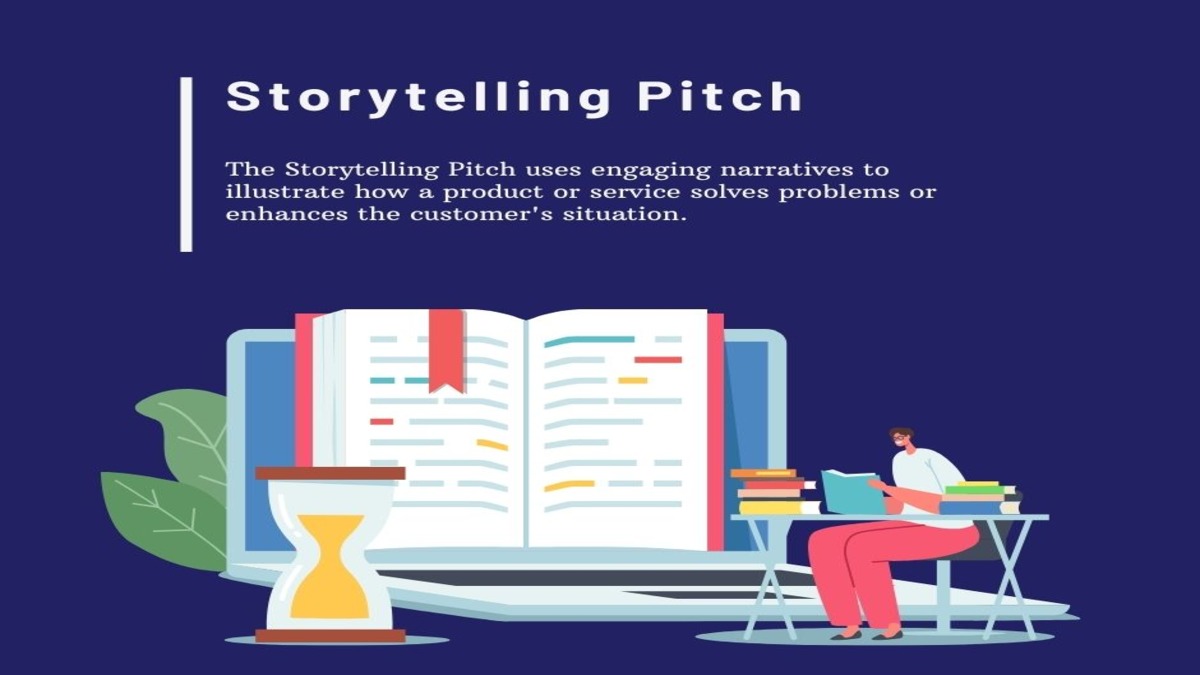
The Storytelling Pitch is a sales approach that uses storytelling techniques to engage and persuade the audience. Instead of simply listing features and benefits, this pitch method presents a compelling narrative that illustrates how the product or service can solve a problem or improve the customer’s situation.
Key Elements of the Storytelling Pitch:
- Engaging Narrative: It includes a well-crafted story that captures attention, often featuring relatable characters and scenarios.
- Emotional Connection: The story creates an emotional bond with the audience, making the message more memorable and impactful.
- Clear Message: The story clearly conveys the main message or value proposition of the product or service.
- Problem and Solution: It typically highlights a common problem or challenge and shows how the product or service provides a solution.
- Call to Action: The story ends with a call to action, encouraging the audience to take the next step, such as making a purchase or scheduling a demo.
Benefits of using Storytelling Pitch
- Engages Emotionally: Stories create an emotional connection with the audience, making your message more memorable and relatable.
- Simplifies Complex Information: Through narratives, complex ideas and features are presented in an understandable and engaging way.
- Increases Retention: People are more likely to remember stories than plain facts or statistics, helping ensure your message sticks.
- Builds Trust: Sharing authentic stories, especially those of real customers or successful outcomes, fosters trust and credibility.
- Demonstrates Value: By illustrating how your product or service has solved problems for others, storytelling showcases its real-world benefits effectively.
Example Use Case:
A tech startup uses a storytelling pitch to share a founder’s journey from overcoming early challenges to creating a groundbreaking app. The story highlights the app’s impact on users, making the pitch more relatable and compelling. This approach helps potential investors connect emotionally and see the app’s real-world value.
Strategy of Storytelling Pitch:
Use storytelling to connect with your audience emotionally. Share real-life success stories that highlight the benefits of your product. This approach makes your pitch relatable and memorable.
2. The Problem-Solution Pitch
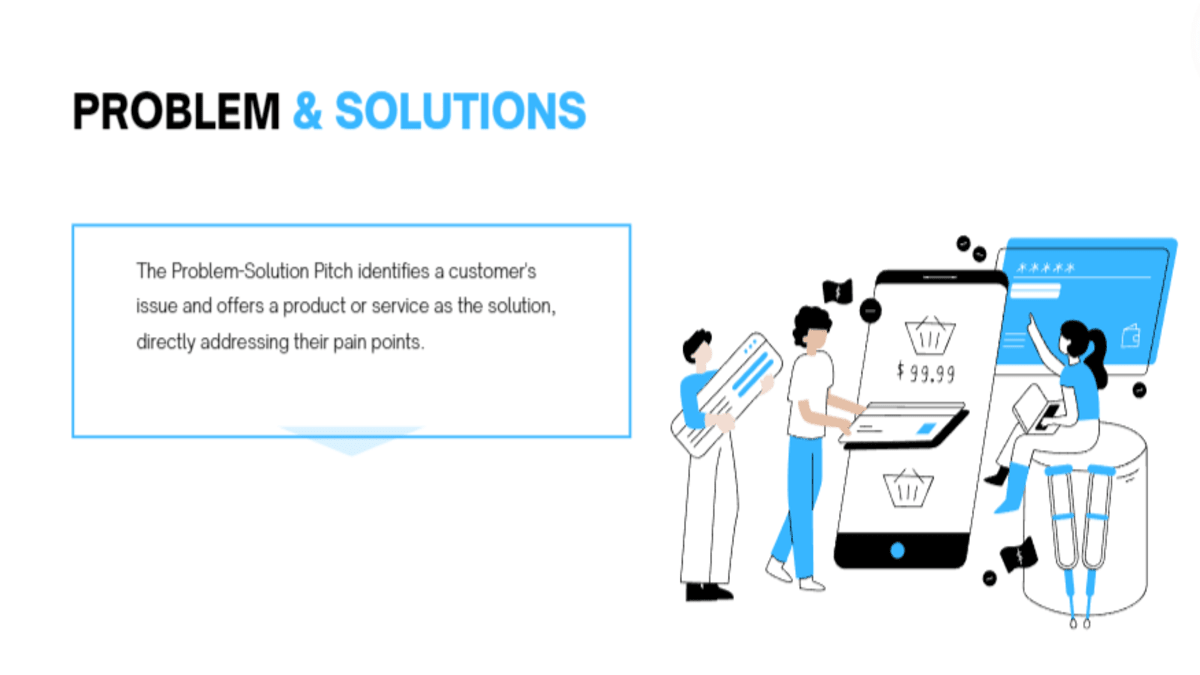
The Problem-Solution Pitch is a sales approach that focuses on identifying a specific problem faced by the audience and presenting a solution that addresses that problem. This method is effective because it directly relates to the customer’s pain points and demonstrates how the product or service can resolve them.
Key Elements of the Problem-Solution Pitch:
- Identify the Problem: Start by clearly stating the problem or challenge that the target audience is experiencing. This helps in creating a connection with the audience as they recognize their own issues.
- Present the Solution: Explain how your product or service solves the identified problem. Highlight the features and benefits that make your solution effective.
- Show Benefits: Illustrate the positive outcomes and improvements that will result from using the solution. This could include increased efficiency, cost savings, or enhanced satisfaction.
- Provide Evidence: Use data, testimonials, or case studies to back up your claims and show that the solution works in real-world scenarios.
- Call to Action: End with a clear call to action, encouraging the audience to take the next step, such as scheduling a demo or making a purchase.
Benefits of using Problem-Solution Pitch
- Highlights Relevance: It directly addresses the customer’s specific pain points, making your pitch highly relevant to their needs.
- Clarifies Value: Clearly shows how your product or service solves a problem, demonstrating its value and effectiveness.
- Engages Audience: Focuses on the customer’s issues and presents your solution as the answer, creating a compelling narrative that engages the audience.
- Builds Urgency: By emphasizing the problem, it can create a sense of urgency for the customer to act and resolve the issue.
Example Use Cases:
A company uses a problem-solution pitch to address the issue of inefficient project management in businesses. They highlight how their software streamlines task assignments and improves team collaboration. This approach clearly shows how their solution directly solves a common pain point.
Strategy of Problem-Solution Pitch:
Identify a common problem your audience faces and present your product as the solution. This straightforward approach shows that you understand the customer’s pain points and have a practical solution.
3. The Question Pitch
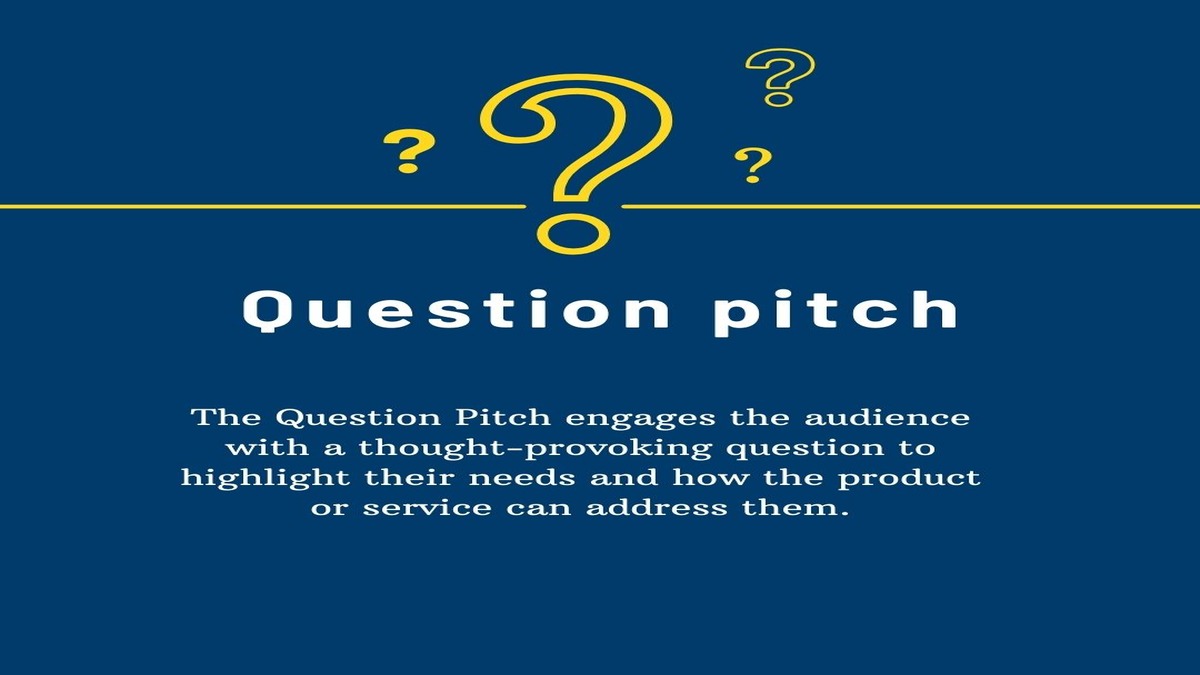
The Question Pitch is a sales approach that starts by asking a thought-provoking or relevant question to engage the audience and make them think about their needs or challenges. This method is designed to prompt the audience to consider how their situation aligns with what the product or service offers.
Key Elements of the Question Pitch:
- Ask a Relevant Question: Begin with a question that resonates with the audience’s current situation or challenges. This question should be designed to make them reflect on their needs or problems.
- Highlight the Problem: The question should bring to light a specific issue or gap that the product or service can address. This helps in creating a sense of urgency or need.
- Present the Solution: After the question, introduce your product or service as the answer to the problem identified. Explain how it effectively resolves the issue or meets the need.
- Showcase Benefits: Highlight the benefits and positive results of using the solution. Explain how it improves the situation or solves the problem highlighted by the question.
- Call to Action: Conclude with a clear call to action, encouraging the audience to take the next step, such as requesting more information or making a purchase.
Benefits of using Question Pitch
- Encourages Engagement: By asking questions, you prompt the customer to think about their needs and engage actively in the conversation.
- Identifies Needs: Helps uncover specific pain points or challenges the customer is facing, allowing you to tailor your pitch to address them directly.
- Stimulates Interest: Questions can spark curiosity and interest, making the customer more invested in finding a solution.
- Fosters Dialogue: Creates a two-way conversation, allowing for a more interactive and personalized pitch.
Example Use Case:
A sales rep asks, “Are you tired of missing deadlines and losing clients due to disorganized workflows?” They then introduce their task management tool, showing how it can solve these specific issues. This method engages potential customers by directly addressing their concerns.
Strategy of Question Pitch:
Start with a question that directly addresses a common issue or concern. This engages the audience and prompts them to think about their needs, making them more receptive to your solution.
4. The Data-Driven Pitch
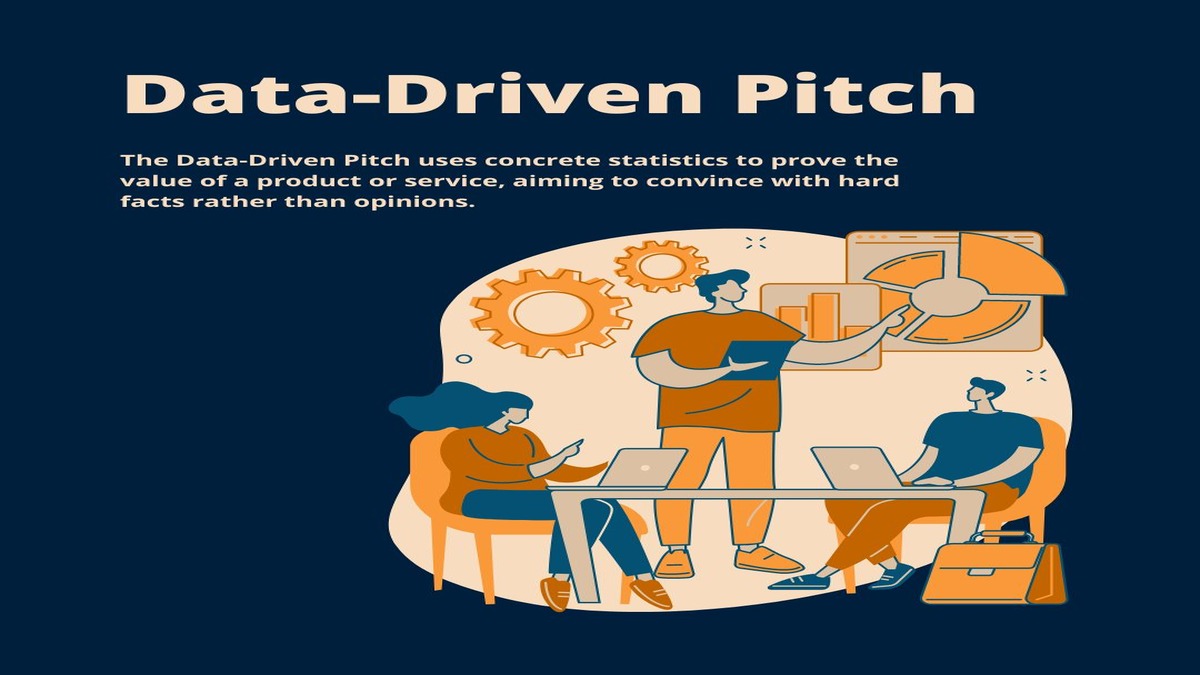
The Data-Driven Pitch is a sales strategy that relies on presenting concrete data and statistics to make a compelling case for a product or service. This approach uses quantitative evidence to demonstrate the value and effectiveness of what you’re selling, aiming to convince the audience with hard facts rather than just opinions or anecdotes.
Key Elements of the Data-Driven Pitch:
- Present Relevant Data: Share key statistics or data that highlight a problem or opportunity, such as market research or customer success metrics.
- Demonstrate Impact: Show how the data highlights the product’s impact and effectiveness in solving the problem or seizing the opportunity.
- Provide Comparisons: Compare your offering against competitors or industry benchmarks to highlight its superior performance or unique advantages.
- Include Case Studies: Use real-life examples or case studies to validate the data and show successful outcomes.
- Conclude with Actionable Insights: Summarize how the data backs your value proposition and end with a clear call to action.
Benefits of using Data-Driven Pitch
- Increases Credibility: Backing your pitch with data and statistics makes your claims more convincing and trustworthy.
- Highlights Impact: Demonstrates the tangible benefits and results of your product or service through quantifiable metrics.
- Supports Decision-Making: Provides concrete evidence that helps potential customers make informed decisions.
- Differentiates Your Offering: Shows how your solution outperforms competitors based on data, making it easier to stand out.
Example Use Case:
A pitch uses, “Our tool boosted productivity by 25% for companies like yours last quarter,” supported by detailed stats and charts. This data-driven approach provides concrete evidence of the tool’s effectiveness, enhancing credibility.
Strategy of Data-Driven Pitch:
Use relevant data and statistics to back up your claims. This adds credibility to your pitch and helps convince data-oriented clients of the value of your product.
5. The Urgency Pitch
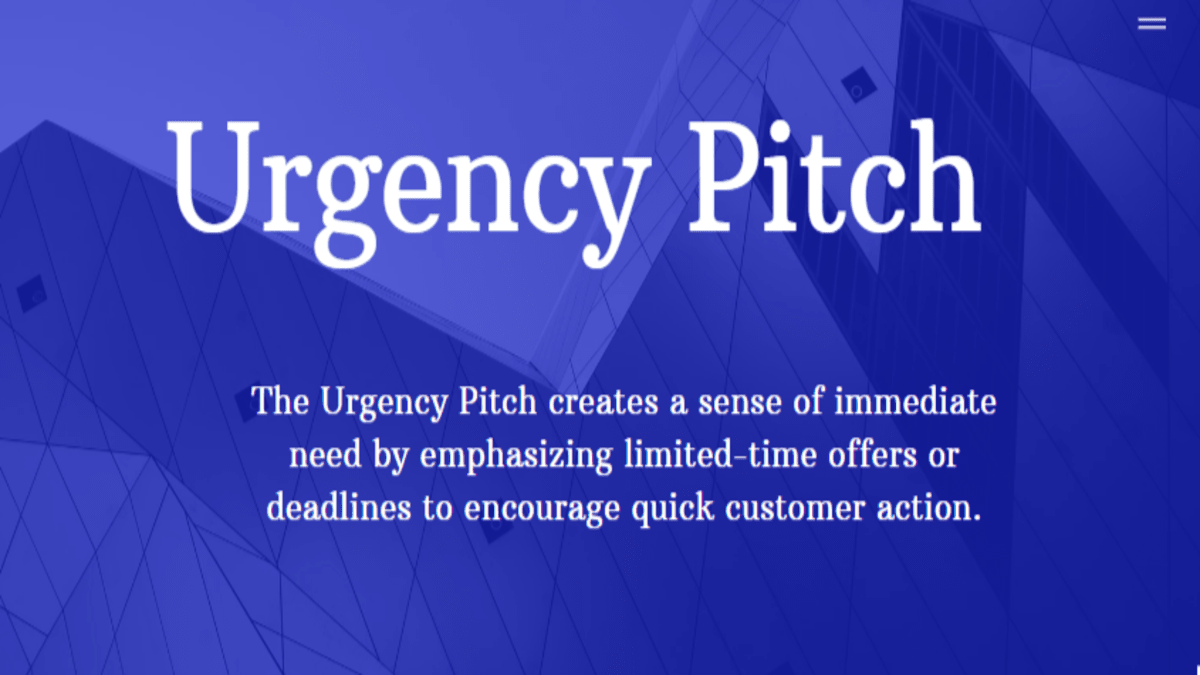
The Urgency Pitch creates a sense of immediate need for your product or service. It emphasizes limited-time offers or fast-approaching deadlines to encourage quick decisions. By highlighting scarcity or time limits, it motivates potential customers to act quickly to avoid missing out. This approach aims to spur prompt action and increase sales conversions.
Key Features of Urgency Pitch
- Limited-Time Offers: Emphasizes special deals or discounts available only for a short period.
- Scarcity Messaging: Highlights limited availability of the product or service to create a sense of urgency.
- Deadline Alerts: Points out approaching deadlines to encourage swift action.
- Immediate Benefits: Focuses on the quick benefits or advantages of acting now.
- Call to Action: Includes a strong, clear prompt to act immediately to capitalize on the offer.
Benefits of Urgency Pitch
- Boosts Conversion Rates: Creates a sense of urgency that encourages immediate action, leading to higher conversion rates.
- Increases Sales: Limited-time offers or scarcity can drive more sales by prompting quick decisions.
- Enhances Engagement: Captures attention and motivates potential customers to engage with the offer right away.
- Reduces Decision Paralysis: Helps overcome hesitation by providing a clear reason to act promptly.
- Creates Exclusivity: Makes customers feel they are getting a special deal, increasing perceived value.
Example Use Case:
A pitch says, “Sign up by Friday to get a 20% discount, available only this week.” This creates a sense of urgency, encouraging quick decision-making.
Strategy of Urgency Pitch:
Create a sense of urgency to encourage immediate action. This approach can be particularly effective when offering limited-time promotions or discounts.
6. The Comparison Pitch
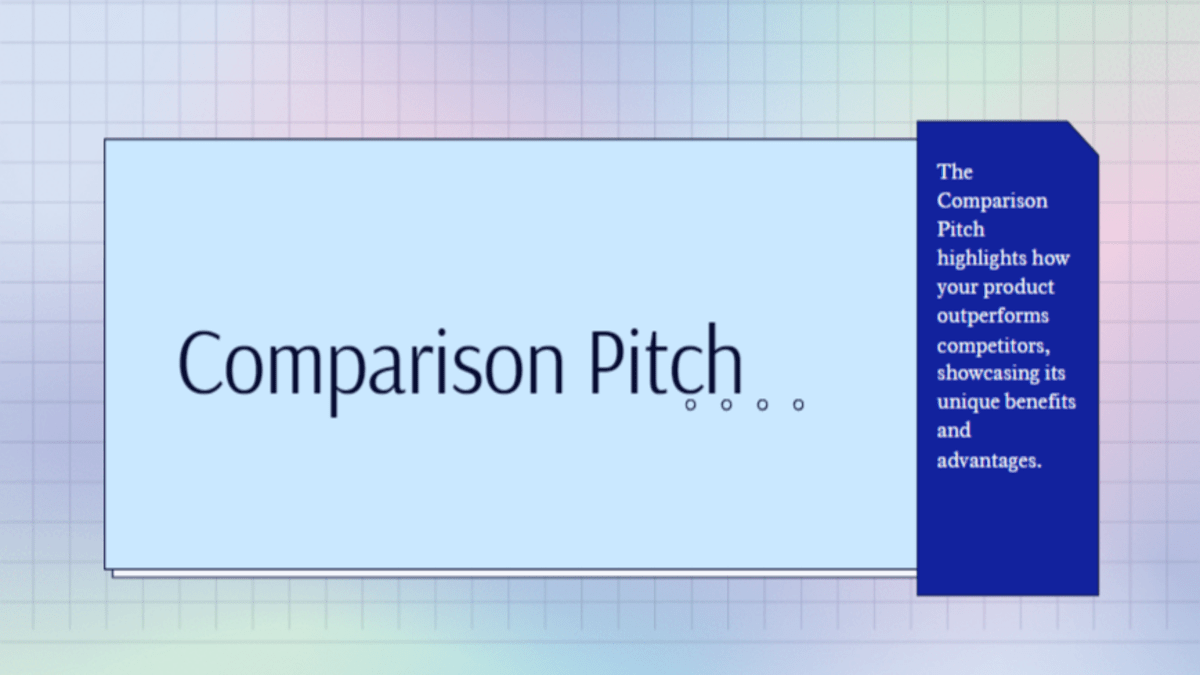
The Comparison Pitch is a sales technique where you highlight how your product or service stands out against competitors or alternatives. By directly comparing your offering to others in the market, you aim to showcase its unique features, benefits, and advantages. This pitch helps potential customers see why your solution is the better choice.
Key Elements of the Comparison Pitch:
- Identify Competitors: Start by naming key competitors to give context for your comparison.
- Highlight Unique Features: Highlight what makes your product unique and better than competitors.
- Use Data and Metrics: Show numbers like performance metrics or cost differences to support your claims.
- Address Common Pain Points: Show how your solution solves issues better than competitors and addresses problems more effectively.
- Showcase Success Stories: Share customer testimonials highlighting their positive switch from competitors.
Benefits of using Comparison Pitch
- Provides Context: Helps potential customers understand the relative value of your offering compared to alternatives.
- Builds Trust: Demonstrates transparency by openly comparing your product with others, which can build credibility.
- Facilitates Decision-Making: Makes it easier for customers to choose your product by showing clear differences and benefits.
- Addresses Concerns: Directly tackles potential objections by showing how your solution overcomes common issues faced with competitor products.
Example Use Case:
A pitch compares two software tools, highlighting how one has better features and lower costs. This helps potential customers see why your product is the superior choice.
Strategy of Comparison Pitch:
Show what makes your product different from others. Point out unique features or benefits that offer extra value to the customer.
7. The Testimonial Pitch

The Testimonial Pitch is a sales approach that leverages positive feedback and endorsements from satisfied customers to persuade potential buyers. Sharing real success stories and customer testimonials helps build trust and confidence in your product or service.
Key Elements of the Testimonial Pitch:
- Select Relevant Testimonials: Select testimonials from customers who saw major benefits and match your audience’s needs.
- Highlight Key Benefits: Highlight specific benefits like efficiency, cost savings, or exceptional service from the testimonials.
- Use Authentic Voices: Present testimonials in the customer’s own words to ensure authenticity. Real names, job titles, and company names add credibility.
- Include Varied Examples: Show diverse testimonials to prove versatility and effectiveness across different industries and sizes.
- Incorporate Multimedia: Use video testimonials for a more engaging and persuasive pitch.
Benefits of Testimonial Pitch
- Builds Credibility: Leverages positive experiences from existing customers to validate your product or service.
- Increases Trust: Real-life endorsements from satisfied customers can enhance trust and reduce skepticism.
- Demonstrates Value: Shows potential customers how your product or service has effectively solved problems for others.
- Provides Social Proof: Highlights that others have had positive experiences, reinforcing the reliability and effectiveness of your offering.
Example Use Case:
A company shares a customer’s success story, showing how their product solved real problems. This helps build trust by proving the product’s effectiveness through genuine user experiences.
Strategy of Testimonial Pitch:
Use testimonials from satisfied customers to build trust and credibility. Real-world examples of how others have benefited from your product can be very persuasive.
8. The Value Proposition Pitch

The Value Proposition Pitch is a sales strategy that focuses on clearly communicating the unique value and benefits that your product or service provides to the customer. It aims to highlight why your offering is a better choice compared to alternatives, emphasizing the specific advantages and outcomes it delivers.
Key Elements of the Value Proposition Pitch:
- Identify Key Benefits: Highlight key benefits and how your product solves customer problems.
- Highlight Unique Features: Highlight unique features or superior quality that set your offering apart from competitors.
- Quantify Value: Show measurable results, like cost savings or efficiency gains.
- Align with Customer Needs: Customize the pitch to solve the customer’s specific problems.
- Clear and Concise Message: Keep the pitch straightforward and easy to understand. Avoid jargon and focus on delivering a compelling message in a concise manner.
Benefits of Value Proposition Pitch
- Highlights Unique Benefits: Clearly shows the unique advantages of your product or service, making it stand out.
- Addresses Customer Needs: Directly aligns with the specific needs or problems of the customer, increasing relevance.
- Differentiates from Competitors: Emphasizes what sets your offering apart from competitors, making your pitch more compelling.
- Simplifies Decision-Making: Provides a straightforward explanation of how your product or service delivers value, aiding in quicker decision-making.
- Enhances Engagement: Engages customers by focusing on what matters most to them, keeping their interest and attention.
Example Use Case:
A startup highlights how their service saves time and reduces costs compared to traditional methods. They emphasize the unique benefits, like ease of use and high efficiency, directly addressing the customer’s needs.
Strategy of Value Proposition Pitch:
Clearly articulate the unique value your product offers. This pitch should answer the question, “Why should the customer choose your product over others?”
9. The Free Trial Pitch
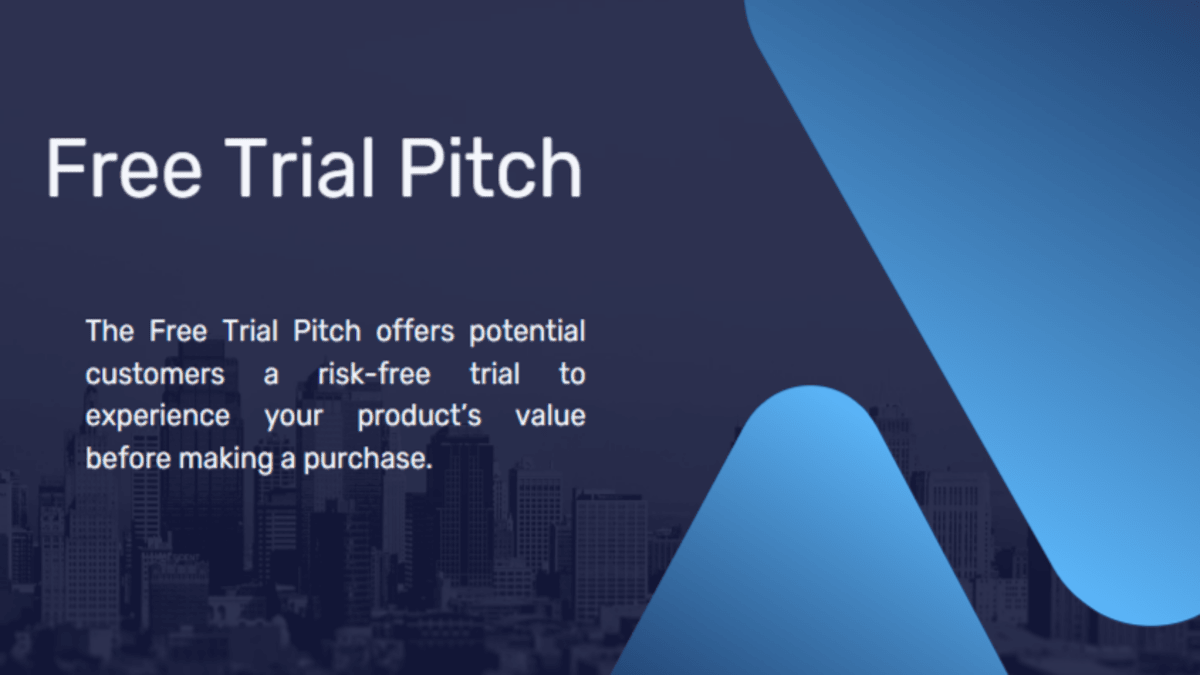
The Free Trial Pitch is a sales approach where you offer potential customers a free trial of your product or service to showcase its value and benefits before they commit to a purchase. This pitch aims to reduce the risk for the customer and allow them to experience the product firsthand, often leading to higher conversion rates.
Key Elements of the Free Trial Pitch:
- Highlight the Offer: Highlight that the free trial has no initial cost and explain what it includes.
- Demonstrate Value: Show how the trial highlights key features and benefits that meet their needs.
- Easy Access: Make starting the trial easy with clear sign-up and usage instructions for a smooth onboarding.
- Time Limit: Specify the duration of the free trial. This creates a sense of urgency and encourages the customer to take action sooner rather than later.
- Support and Guidance: Provide support and resources during the trial to help customers maximize their experience.
Benefits of Free Trial Pitch
- Reduces Risk: Allows potential customers to try before they buy, reducing their perceived risk of investing in your product.
- Showcases Value: Provides a hands-on experience, letting customers see the benefits and features of your product firsthand.
- Builds Trust: Demonstrates confidence in your product and fosters trust by offering a no-obligation trial.
- Encourages Adoption: Increases the likelihood of conversion by giving customers a chance to integrate the product into their routine.
- Generates Feedback: Offers an opportunity to collect user feedback during the trial, helping you improve the product and address any issues.
Example Use Case:
Try our software free for 30 days. Experience the difference without any commitment.”
Strategy of Free Trial Pitch:
Encourage potential customers to try your product risk-free. A free trial can lower the barrier to entry and allow customers to experience the benefits firsthand.
10. The Benefit-Focused Pitch
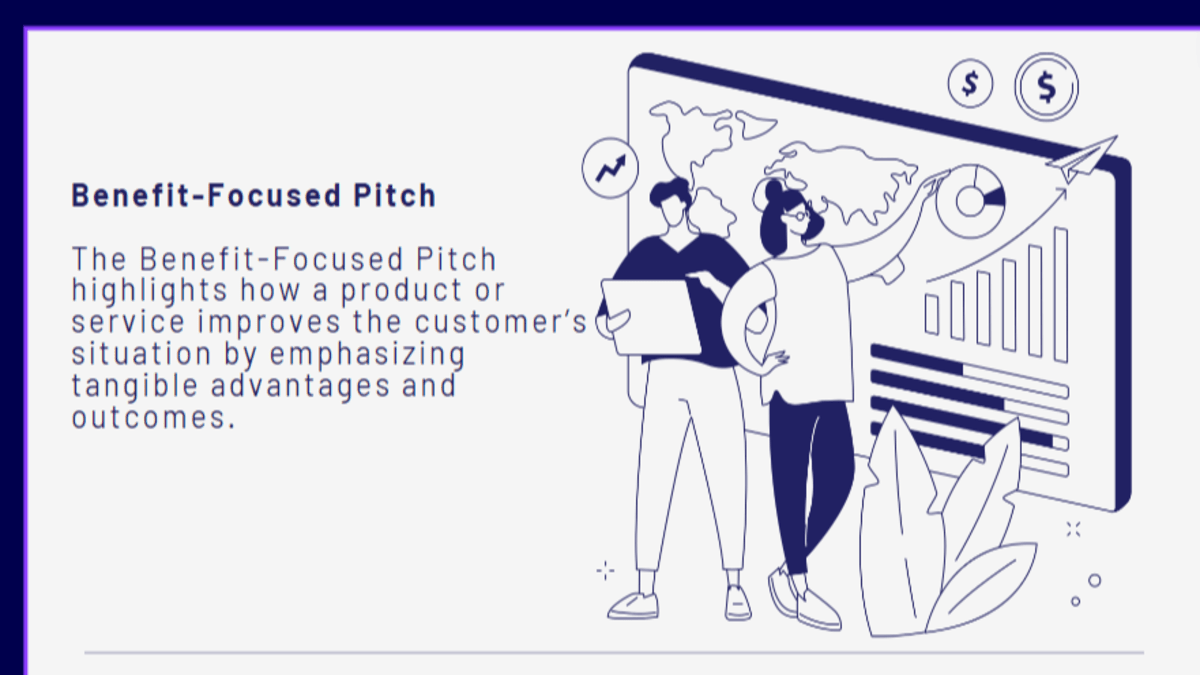
The Benefit-Focused Pitch is a sales strategy that emphasizes the specific advantages and improvements a product or service will bring to the customer. Instead of detailing features or technical aspects, this pitch highlights how the product or service solves a problem or enhances the customer’s situation, focusing on tangible outcomes and benefits.
Key Elements of the Benefit-Focused Pitch:
- Customer Needs: Address the customer’s needs and show how your offering will benefit them directly.
- Highlight Benefits: Highlight key benefits and how they will positively impact the customer’s life or business.
- Use Simple Language: Avoid technical jargon and present the benefits in straightforward, easy-to-understand terms.
- Real-Life Examples: Show practical examples of how your product’s benefits apply in real-life situations.
- Emphasize Value: Make it clear how the benefits translate into value for the customer, such as saving time, increasing efficiency, or improving their overall experience.
Benefits of Benefit-Focused Pitch
- Highlights Value: Emphasizes the direct benefits and positive impacts of the product, making its value clear to the customer.
- Addresses Needs: Focuses on how the product solves specific problems or fulfills particular needs, making it more relevant to the customer.
- Engages Emotionally: Connects with the customer on an emotional level by showcasing how the product improves their situation.
- Simplifies Decision-Making: Provides a clear understanding of what the product can do for them, making it easier for the customer to make a decision.
- Drives Action: Motivates the customer to act by clearly demonstrating how the benefits will enhance their life or business.
Example Use Case:
A software company offers a free 30-day trial to showcase their product’s features and ease of use. They highlight that there are no upfront costs and provide support to help users get started.
Strategy of Benefit-Focused Pitch:
Focus on the benefits rather than just the features of your product. Customers are more interested in how your product can improve their lives or solve their problems.
How to Select a Best Sales Pitch
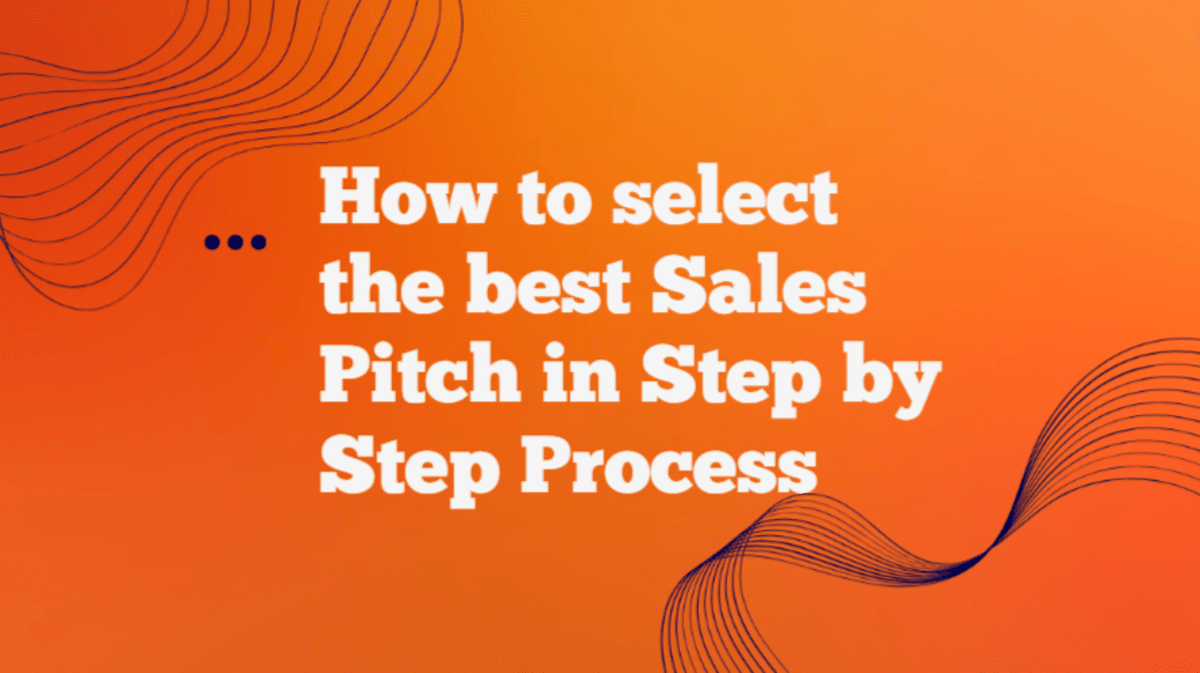
Here we provide you a step by step process to create a better Sales Pitch
- Know Your Audience: Understand the specific needs, preferences, and challenges. This helps you tailor your pitch to highlight how your product or service can solve their problems and add value.
- Define Your Value Proposition: Clearly state what makes your product or service unique and Valuable. Focus on the benefits it provides and how it solves the customer’s specific problems or needs.
- Start Strong: capture your audience’s attention right away. Begin with a compelling statement, question, or story that highlights the value of your product and makes the listener want to learn more.
- Highlight Features and Benefits: Focus on the key features and the specific advantages they provide to solve the customer’s problems or improve their situation.
- Use Examples: Share relevant success stories or testimonials. This helps the audience see how it can work for them and adds credibility to your claims.
- Address Objections: It involves anticipating and responding to potential concerns or doubts the audience might have. This builds trust and shows that you understand their needs and challenges.
- Provide Evidence: share data, testimonials, or case studies to support your claims. This adds credibility and demonstrates that your product or service delivers real results.
- Make an Offer: Present a compelling call to action, like a free trial or discount. This gives the prospect a straightforward opportunity to take action and buy.
- Encourage Interaction: Invite questions and engage in discussion. This helps address their concerns and build a connection.
- Close Clearly: Summarize benefits and guide them on the next steps. Make it simple and straightforward to finalize the deal.
Conclusion:
In conclusion, crafting an effective sales pitch is an essential skill for any sales professional. By exploring various approaches like storytelling, problem-solution, data-driven, and testimonial pitches, you can tailor your message to resonate with different audiences. Each method offers unique benefits and can be adapted to suit the specific needs and preferences of potential customers. Whether you’re highlighting key benefits, sharing customer success stories, or offering a free trial, the key to a successful pitch is to engage, inform, and persuade your audience, ultimately leading to successful sales and satisfied customers.
FAQs for Top 10 Sales Pitch Techniques for 2024
1. What is a sales pitch?
Ans. A sales pitch is a concise, persuasive message aimed at convincing potential customers to purchase a product or service. It typically highlights key features, benefits, and unique selling points.
2. Why is a good sales pitch important?
Ans. A good sales pitch is crucial because it can effectively communicate the value of your product or service, address customer needs, and persuade them to make a purchase, thus driving business success.
3. What are some common types of sales pitches?
Ans. Common types include The Storytelling Pitch, The Problem-Solution Pitch, The Question Pitch, The Data-Driven Pitch, The Comparison Pitch, The Testimonial Pitch, The Value Proposition Pitch, The Free Trial Pitch, and The Benefit-Focused Pitch.
4. How do you choose the right type of sales pitch?
Ans. Choose based on your audience, product or service features, and the context of the sales situation. Understanding your customer’s needs and preferences is key to selecting the most effective pitch type.
5. What is The Storytelling Pitch?
Ans. The Storytelling Pitch involves using a narrative to engage the audience emotionally, making the product or service more relatable and memorable by linking it to real-life scenarios.
6. What makes The Problem-Solution Pitch effective?
Ans. This pitch type clearly identifies a problem the customer is facing and presents your product or service as the ideal solution, making it a straightforward and compelling approach.
7. How does The Data-Driven Pitch build credibility?
Ans. The Data-Driven Pitch uses facts, statistics, and case studies to support claims about the product or service, which helps build trust and credibility with the audience by showing tangible evidence of value.
8. What is the role of testimonials in a sales pitch?
Ans. Testimonials provide social proof by showcasing positive experiences and results from existing customers, which can reassure potential buyers and build trust in your product or service.
9. Why offer a free trial in a sales pitch?
Ans. Offering a free trial allows potential customers to experience the product or service firsthand, which can significantly increase conversion rates by reducing the perceived risk of purchase.
10. How can you measure the effectiveness of a sales pitch?
Ans. The effectiveness can be measured by tracking metrics such as conversion rates, sales volume, customer feedback, and the time taken to close deals. Regularly reviewing and refining your pitch based on these metrics can lead to continuous improvement.

